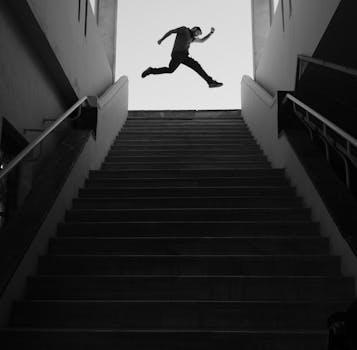Freerunning: Acrobatic Movements in Urban and Natural Environments
Freerunning, often confused with parkour, is an exhilarating discipline that combines acrobatics, creativity, and athleticism. It involves navigating through urban and natural environments using fluid movements, jumps, and flips. This article delves into the essence of freerunning, its origins, techniques, and the cultural impact it has made globally.
The Origins of Freerunning
Freerunning emerged in the late 1990s, primarily in France, as a form of self-expression and physical activity. It was popularized by David Belle, a former gymnast and parkour practitioner, who sought to create a more artistic and expressive form of movement. While parkour focuses on efficiency and overcoming obstacles, freerunning emphasizes creativity and style.
Key Influences
The development of freerunning was influenced by various disciplines, including:
- Parkour: The foundational movement discipline that prioritizes speed and efficiency.
- Martial Arts: Techniques from disciplines like capoeira and breakdancing contributed to the acrobatic elements of freerunning.
- Gymnastics: The incorporation of flips and aerial maneuvers adds a dynamic flair to the movements.
Techniques and Movements
Freerunning encompasses a wide range of techniques that allow practitioners to navigate their environment creatively. Some of the most common movements include:
- Vaults: Techniques used to overcome obstacles, such as the Kong vault or the speed vault.
- Flips: Aerial maneuvers like backflips and front flips that add flair to the performance.
- Wall Runs: Running up vertical surfaces to gain height or transition to another movement.
- Rolls: Techniques used to safely land from jumps and reduce impact on the body.
Training and Safety
Training in freerunning requires dedication, practice, and a focus on safety. Many practitioners start with basic parkour techniques before progressing to more advanced movements. Safety measures include:
- Proper Warm-Up: Preparing the body to prevent injuries.
- Use of Mats: Practicing flips and high jumps on soft surfaces to minimize risk.
- Spotting: Having a partner to assist during practice can enhance safety.
The Cultural Impact of Freerunning
Freerunning has transcended its origins to become a global phenomenon, influencing various aspects of culture, including film, fashion, and social media. The rise of platforms like YouTube has allowed freerunners to showcase their skills to a wider audience, leading to increased popularity and participation.
Freerunning in Media
Freerunning has been featured in numerous films and commercials, showcasing its dynamic nature. Notable examples include:
- “District 13” (2004): A French film that prominently features parkour and freerunning sequences.
- “Casino Royale” (2006): The James Bond film includes a thrilling chase scene with freerunning elements.
- Red Bull Events: The brand has sponsored various freerunning competitions, further popularizing the sport.
Freerunning as a Community
The freerunning community is characterized by its inclusivity and support. Practitioners often gather in groups to train, share techniques, and motivate each other. Events such as competitions and workshops foster camaraderie and skill development.
Case Study: The World Freerunning Parkour Federation
The World Freerunning Parkour Federation (WFPF) has played a significant role in promoting freerunning as a legitimate sport. Established in 2011, the WFPF organizes competitions, provides training resources, and advocates for the inclusion of freerunning in mainstream sports. Their efforts have led to:
- Increased visibility for the sport.
- Development of standardized training programs.
- Opportunities for athletes to compete at international levels.
Conclusion
Freerunning is more than just a physical activity; it is a form of artistic expression that challenges the boundaries of movement in both urban and natural environments. With its roots in parkour and influences from various disciplines, freerunning has evolved into a global phenomenon that continues to inspire individuals of all ages. As the community grows and the sport gains recognition, freerunning stands poised to leave an indelible mark on the world of athletics and culture.
